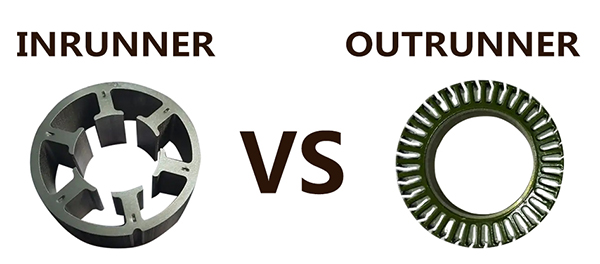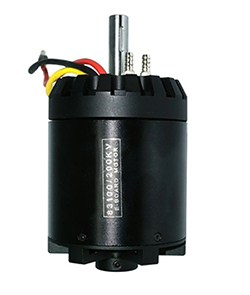Differences Between Outrunner and Inrunner Brushless Motors
The advantages of brushless motors are high speed, high efficiency, and low maintenance costs. Brushless motors are widely used in computers, handheld power tools, and various vehicles. In modern industry, people generally choose to purchase brushless motors. Brushless motors are divided into brushless outrunner motors and inrunner motors. Next, the differences between the two types of motors will be following.
Structure
The output shaft of the brushless outrunner motor is connected to the propeller and a permanent magnet is placed on the outer rotor, which rotates on the external housing.
On an inrunner motor, the rotor exists inside the stator. The magnet is placed on the rotor, which rotates, while the stator winding is fixed. In this case, the housing does not rotate and is fixed. The stator winding is placed on the inside of the housing.

Physical size
In general, brushless outrunner motors are larger in diameter and smaller in length compared to similar weight inrunner motors. Conversely, inrunner motors are smaller in diameter and typically larger in length.
RPM per volt
Typically, the inrunner motor has a high speed per volt. On the other hand, the outrunner motor of the same size has a low speed per volt.
Torque
In general, brushless outrunner motors produce more torque than inrunner rotors. This is because the outrunner motor has a lower speed. The relationship between rotational speed and torque is inversely proportional. As the speed increases, the torque of the motor decreases. Therefore, an outrunner motor will usually produce more torque than an inrunner motor.
Efficiency
In general, brushless inrunner motors are likely to be more efficient than brushless outrunner motors. The efficiency of the inrunner motor is relatively high due to its low inertia. Outrunner motors are relatively less efficient due to their high inertia.

Noise
Generally speaking, the inrunner brushless motor is very noisy, however, the outrunner motor is much quieter.
Heat transfer
The heat of a brushless inrunner motor must be dissipated through the center of the motor. The heat must be transferred from the windings to the center of the motor, the motor shaft. The only way to cut off the heat is through the shaft; this is why it dissipates heat more slowly.
Brushless outrunner motors have the stator winding directly on the inner surface of the external can. This direct contact point provides an excellent surface with a very large area for heat transfer. This is the method by which the ourunner motor is able to get rid of excess heat, so the outrunner brushless motor dissipates heat better and can maintain a lower temperature for a longer period of time.
Maintenance
Outrunner brushless motor needs less maintenance while inrunner motors require high maintenance. The outrunner motor dissipates heat better, so it is difficult to be burned out and can be repaired by yourself in general. If the inrunner motor burns out, it is more difficult to repair because you can't wind the enameled wire yourself.
Purchasing a brushless motor is a very important decision. So which motor would you choose between an inrunner and an outrunner?

